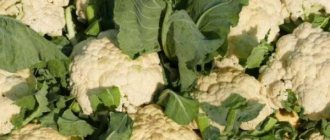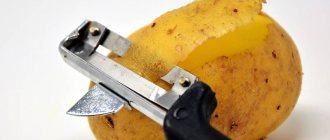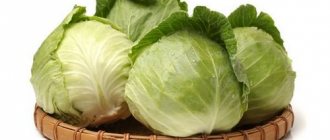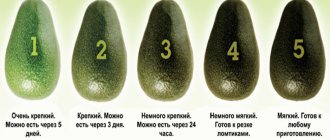Growing vegetables for the winter requires proper organization of their subsequent storage. A careless attitude to this issue can lead to damage to the harvest.
Beets are one of the popular harvested crops, and this vegetable can be stored in the cellar not only until spring, but also until the next harvest.
We will tell you further about how to store beets in a cellar or basement until spring.
Winter storage rules
Planning for planting beets that will need to be stored in the cellar all winter begins with choosing a variety.
It must be suitable for the climatic zone and belong to late- or mid-ripening . The shelf life of such crops is much higher than that of earlier crops.
It is equally important to create conditions in your cellar suitable for storing beets.
Temperature
The temperature in the cellar is one of the very important indicators. For beets, the best option is from 0ºС to +2ºС. If the temperature drops lower, the vegetables may freeze; if the temperature is higher, the beets will begin to sprout, losing moisture, becoming soft and not as tasty.
Humidity
A humidity level of 85% to 90% is suitable for storing beets .
This range will not allow the vegetables to rot, and, at the same time, will not allow them to dry out.
Fomoz
The disease affects the fruit during growth and first forms in the upper part of the plant. Afterwards, the fomoz descends down onto the root crop. When the disease occurs, white fluffy spots and brown-black stains form on the stem and surface of the leaves.
Prevention of Phomasis
To prevent the spread of Phoma, you must adhere to the following rules for storing beets:
- Harvest in the 2nd half of September.
- Store only undamaged vegetables.
- Disinfect the storage area.
- Ensure temperature control and ventilation.
- Remove damaged vegetables from the total harvest.
Beets should be stored without tops. Before placing vegetables in boxes, they must be ventilated. You can sprinkle the crop with sawdust or peat mixture on top. If you follow all the recommended measures, you can enjoy the taste of the sweet root vegetable throughout the winter.
Preparing root vegetables
One of the conditions for successfully preserving the harvest is proper preparation of root crops. It includes several stages.
Harvesting
Ripe beets should be harvested correctly. This should be done in such a way that the tubers are damaged as little as possible. To cultivate the beds, forks can be used for digging, and small shovels can be used to remove vegetables. The optimal harvest time is cool, dry weather .
Drying
Vegetables removed from the ground should be thoroughly dried to remove excess moisture. It is best to do this under shelters in warm weather with low humidity. For drying, it will be enough to withstand the crop for several days.
You can tell that the beets have dried out by the condition of the soil that has stuck to them. If lumps of soil easily fall off the tubers without any effort, the beets are ready.
Otherwise, the vegetables are left to lie under the canopy for a little longer. Drying for too long can cause the fruits to begin to wilt , losing moisture.
Removing tops
Beets are sent for storage without tops. To do this, it is cut off, leaving a few centimeters. At the same time, the root crops are shaken off of excess soil. The lower root is not cut off when preparing the harvest.
Sorting
After preparation, the harvested crop should be sorted. It is advisable to select fruits of approximately the same size, without damage, for a long stay in the cellar. Damaged vegetables are not sent for storage .
Small ones are poured into a box and used first.
Popular ways to preserve beets for the winter
Beets can be successfully preserved from one and a half months to a year at home.
Popular storage methods for summer residents:
In bags or film
The main condition when storing root vegetables in polyethylene is to ensure air circulation.
Therefore, the bags should not be tied; it is better to leave them open. Or make small holes.
To prevent humidity from exceeding the required threshold of 96% and condensation from appearing on the film, you can add a little mustard to each bag. As a last resort, sawdust is also suitable for this purpose.
In salt
Vegetables are preserved much better in ordinary table salt than in sand. This is a natural preservative that can preserve the beet harvest almost completely.
Salt prevents the spread of diseases and maintains the required level of humidity.
If you can’t afford to buy a large amount of salt, then you can fully use its beneficial properties by mixing it with sand.
Another way is to make a saline solution, dip the tubers in it one by one, and let them dry. And then put them in boxes with sand.
In sawdust or ash
Sawdust, especially from coniferous trees, can protect the crop from disease. The phytoncides contained in sawdust can kill pathogenic bacteria and destroy fungi.
A natural “preservative” is stove ash. Before using it for its intended purpose, it must be sifted through a fine-mesh sieve.
In the peels of garlic or onions
Instead of sawdust, you can use onion and garlic peels. This is an excellent covering material that disinfects the surface of the fruit.
At the same time, the tubers should be placed in canvas bags so that the husks do not leak.
How and where to properly store potatoes: 5 ways
Dipping into clay mash
This method has been known for a very long time, and therefore is very effective and completely harmless. The clay should first be sifted through a construction sieve to avoid lumps.
Then dilute it with water so that you get a mass that is similar in thickness to sour cream. The fruits are dipped into it one by one. Then they are sent to dry.
You need to make sure that the clay dries completely and only then send the harvest to the cellar. Clay completely covering the fruit prevents it from becoming infected with rot and prevents moisture evaporation.
In sand
For storing root vegetables in the cellar, it is best to choose loamy sand. It stops excessive evaporation of precious moisture. Prevents the spread of diseases.
Maintain the desired temperature. Before pouring sand into boxes and placing crops in it, it should be moistened. To do this, mix it with water.
The calculation is this: a bucket of sand uses a liter of water. You can check the moisture content by squeezing a handful of sand in your palm. If it doesn’t crumble and remains a lump, it means it’s ready.
First, sand covers the bottom of pre-prepared boxes. Then they begin to lay out the vegetables so that they do not touch each other.
Next, add a layer of sand, isolating one layer of tubers from the other until the box is completely filled.
How to prepare the storage?
Proper preparation of the cellar room should include high-quality waterproofing and air venting so that optimal humidity and temperature are maintained.
When arranging through holes, protection against rodents must be provided. The purpose of waterproofing is to prevent possible flooding by groundwater and rainwater.
This point must be taken into account at the stage of creating the structure. For example, organizing a good drainage around the perimeter of the building .
Before placing a new crop in the cellar, the room should be inspected and, if necessary, repaired and ventilated. It is also important to remove the remains of last year's harvest and debris. If necessary, treat with bleach for sterilization.
Variety selection
Before you begin preparing the premises, you need to grow exactly those vegetable varieties that are best suited for preservation for the winter. These are, as a rule, species resistant to frost and long-term storage, so the following are distinguished: “Bravo”, “Bordeaux 237”, “Mulatka”, “Red Ball”, “Podzimnyaya”, “Pablo F1” and other mid-season and late species.
If we talk about soil, it is desirable that beets are grown in loamy or sandy loam types, which contribute to fewer cracks, growths, and diseases in general.
Methods and terms
There are several ways to store beet harvest in the basement. A specific option should be selected taking into account existing conditions and opportunities. Beets are a fairly unpretentious vegetable that can be stored well in the basement not only until spring, but even longer.
Sawdust
Keeping vegetables in sawdust allows you to preserve the harvest for a long time. This method is suitable for finding crops in winter, since sawdust retains heat well. For compactness, you can arrange sides near the storage area in the cellar, or use drawers.
Paper bags
Beets are poured into large paper bags so that 1/3 of the volume remains empty. You should not cover them with anything on top. As in the case of sand, the method is based on the property of paper to absorb moisture . The storage method in bags is suitable for preserving a small harvest.
In sand
To preserve the harvest, boxes or boxes are prepared, bounded by boards, in which the beets are stored sprinkled with sand. Boxes can be not only wooden, but also plastic. But in the latter case, it is important to ensure that they have a sufficient number of holes.
This option is suitable for regions where there are no severe frosts that can lead to freezing of sand and, as a result, damage to root crops.
A layer of sand is poured onto the bottom of the boxes or fences, and beets are laid out on top. And again sand is poured so as to cover the vegetable.
The boxes can be stacked on top of each other in such a way that air access is maintained. In such conditions, root crops can remain for up to a year or even more. The method using sand is based on its ability to absorb excess moisture.
Plastic bags
If space in the cellar is limited, then you can compactly place the harvest by pouring it into large plastic bags . It is necessary to make a sufficient number of holes along their entire surface so that condensation does not appear inside.
You can also add a little sawdust inside the bags to combat moisture. In this package, the vegetable can sit until spring. But it will be necessary to periodically check the condition of the crop to prevent rotting.
Polyethylene is not the best packaging for beets. If possible, it is advisable to use other methods, since vegetables are stored worse in film and may spoil before spring.
If moisture is noticed inside the bags during beet storage, the crop must be dried and placed in another package.
In a heap on the floor
This method of preserving the harvest is the simplest in organization . The beets are laid out in a pyramid on a dry floor pre-treated with a disinfectant. For better preservation, there should be larger vegetables at the bottom, then smaller ones.
The top of the folded pyramid can be covered with straw and earth. In such conditions, the crop can be stored until spring, but it is necessary to control the condition of the root crops.
Wicker baskets
Beets prepared for storage can be placed in large wicker baskets. They can be installed on the floor, on shelves or wooden platforms.
The top of the vegetables can be covered with straw or pine needles .
In a non-damp basement without the threat of freezing, the beet harvest in baskets can be stored not only until spring, but even until the next season.
Preparing beets for winter storage
The sorted root crop, cleared of soil elements and tops, should be placed in a dry room (should be well ventilated, no direct sunlight) so that the crop dries completely within a week. After which you can move the root crop to the cellar for the winter.
Note: It is recommended to store beets in a basement or cellar at a humidity of no more than 90% and a temperature of 0-2 degrees. At higher temperatures, the process of withering, decay and the development of diseases may begin. The crop will be most sensitive to elevated temperatures at the beginning of the storage period; at a level of +4 degrees, the tops of the vegetable begin to sprout.
It is important to remember that high air temperatures in storage contribute to the rapid development of fungal diseases that can affect the entire crop. There are cases when the signs of some diseases during sorting of the dug up crop will be outwardly completely invisible.
During storage, air circulation in the cellar is of great importance, so natural ventilation should be installed in the basement. Bins for root crops must be arranged at a height of 15 cm from the floor level, which will create good conditions for air exchange and uniform cooling of the crop, and will not allow it to sweat.
Proper harvesting of beets
Long-term storage of this root crop causes problems for many. However, it is difficult to imagine Russian cuisine without this vegetable. At the same time, eating beets as spring approaches has enormous benefits for the body and a large number of medicinal properties.
In fact, storing beets should not cause much trouble, since they are a table root vegetable, which has a much better shelf life than carrots or potatoes. If you know about proper storage and put suitable specimens in storage, you will be able to save it until spring.
Successful storage of root crops will be possible under the following factors:
- Ensuring suitable indoor conditions;
- Properly grow, carefully collect and sort the crop;
- Select varieties with better shelf life and cold resistance.
Before you start growing this crop, you need to remember that the highest quality seed will grow best on fertile loamy or sandy loam soil. When planted in acidic soil, it may be affected by ordinary scab, which will contribute to the formation of warts, cracks and roughness on the skin. In the resulting cracks, other diseases will develop that will negatively affect shelf life.
The following varieties with high keeping quality are suitable for cultivation in personal plots:
- Bravo
- Red ball
- Incomparable
- Bordeaux 237
- Single shoot
- Podzimnyaya
- Nosovskaya
Figure 2. Proper harvesting
Experienced gardeners recommend choosing varieties with small root crops, as they are tastier, not as fibrous as large ones, and store much better. But at the same time, you shouldn’t leave small beets.
Harvesting root vegetables should begin earlier than harvesting carrots, since beets may freeze during the first frost. Try to dig up root crops very carefully to prevent mechanical damage, which will cause viral and fungal diseases to occur in them (Figure 2).
Diseases that reduce the shelf life of a crop:
- Root crops overfed with phosphorus and nitrogen become susceptible to white rot.
- Gray rot most often develops on frozen or damaged beets.
- With soil adhering to the root crop, gray or white rot can be brought into the cellar.
- In the summer, the crop is very often affected by phomosis and fusarium, which begin to actively develop in winter and form black spots and voids on the root crops.
In addition, it should be taken into account that during wet spring and dry summer there is a lack of boron salts in the soil, which causes the development of root rot, which penetrates from the head of the vegetable and at the same time forms voids in it. Such root vegetables rot at the very beginning of the storage period.
Preparing the harvest for storage in the cellar
It is recommended to choose a dry, sunny day for harvesting. The root crop has most of its “body” above the soil surface, and it does not tolerate night frosts well. If you allow root crops to freeze, their shelf life will be very poor. The frozen part quickly deteriorates and will soon begin to rot (Figure 3).
Note: For this reason, the time to dig up the crop must be chosen correctly. For example, in the middle zone, root crops are harvested in October, and in the southern regions at the end of October or beginning of November.
If the harvest took place during rainy weather, the root crops will need to be dried. The presence of humidity promotes the active development of pathogenic microorganisms and fungi that damage root crops and the occurrence of rot and mold. Beets must be carefully dug out of the soil using a shovel or pitchfork, being careful not to damage the skin. Any damage (scratches, cracks) will make storage problematic because it will make the vegetables weakened for bacteria.
Upon completion of the harvest, a number of manipulations must be carried out. First, you need to clean the root vegetables. Secondly, you should carefully shake and remove any adhering soil from the vegetable.
Figure 3. Preparing root vegetables for storage
It is recommended to clean the harvested crop using gardening gloves or a cloth. It is better not to use a spatula or knife, since sharp objects can easily damage the vegetables. There is also no need to slam the roots against each other or hard surfaces to get rid of stuck soil. Upon completion of cleaning from the soil, you need to tear off the roots, while the thin side ones are completely removed, and the central root is shortened to 6-7 cm. All manipulations with the roots are carried out by hand. If you need to trim a very thick root, you can use scissors or pruners for this.
Next, you should remove the tops from the root crops and to do this, the leaves are collected in a bunch and cut to a height of half a centimeter. It is not worth cutting the tops very short, as this can damage the crop. After trimming, it is necessary to dry the vegetables and lay them out on a litter (can be in the open air, if weather conditions permit) or scatter it in an even layer into one vegetable in a dry, well-ventilated area. If the harvest took place in the rain, then the vegetables must be dried for at least a week. Next, peeled and dried root vegetables should be sorted by size; medium-sized vegetables, dense and round, are suitable for ideal storage.
Note: For example, very large and very small root vegetables store much worse. These vegetables are best placed in the refrigerator to be used or processed first.
Once all the preparation of the beets is complete, they can be moved to the cellar. However, it is necessary to create all the conditions for storing root crops, properly prepare the place and carry out a number of preventive measures.
How to increase the shelf life of a product?
Despite the fact that beets are vegetables that store well, there are techniques that can be used to further extend the shelf life of the crop and avoid rotting.
Salt
Pre-treatment of root crops with saline solution will help increase the shelf life of harvested beets and prevent the appearance of rot. It is prepared based on the proportion: 10 grams of salt per 1 liter of water.
After processing, the beets are dried and only then sent to the cellar. This technique allows you to extend the shelf life of the product until spring without spoilage .
Phytocides
Plants with a high content of phytocides are natural disinfectants. They prevent the development of pathogenic microflora, including fungi and mold.
These plants include:
- horseradish;
- fern;
- basil;
- sagebrush;
- mint and some other types.
It is very simple to use such plants - they can be used to line the bottom of drawers or put them next to the storage area in the cellar.
How to store beets in a city apartment - secrets and subtleties
How to store beets if there is no cellar? We will have to create a suitable regime for her in the apartment. A glazed and insulated balcony is an excellent replacement for a cellar. Place the beets there, placing them in wooden boxes and covering them with sawdust or sand. Monitor the temperature - it should not fall below zero. During frosts, insulate the boxes, for example by wrapping them in old clothes. If potatoes are already stored on the balcony, add beets to the same bags or boxes.
Place the beets in open plastic bags and place them in the coldest place in the house, such as a balcony door, or take them out into the vestibule. You can also keep beets in the refrigerator. Unwashed root vegetables are placed in open or perforated bags, one copy at a time. But vegetables are stored this way for no more than a month, otherwise they will begin to wither and lose their taste.
But frozen beets will last for more than six months without loss. You can freeze it raw or boiled, but remember that you need to boil it in the peel and only then peel it. How to freeze beets? Peel fresh or boiled root vegetables, chop them on a grater, in a food processor, in a blender, or simply with a knife. Place in small portions into packaging - bags or containers, and place in the freezer. You can freeze beet roots whole without chopping them.
Now you know the most practical ways to store beets without loss until spring! Have a good harvest!
Source
Possible problems and ways to solve them
When organizing the storage of beets in the cellar until spring, you may encounter a number of problems:
| Problem | Ways to solve the problem |
| After harvesting beets, it rains, which prevents the vegetable from drying quickly | If the weather is rainy, it may take a few more days to dry. |
| An unpleasant odor appears in the cellar | The reason may be a violation of containment conditions or improper preparation. If there is a smell of rot, the crop should be sorted, removing spoiled root crops. You should also check the condition of ventilation, and whether there are fruits and vegetables adjacent to the beets, which impair its keeping quality. |
| Frozen vegetables | They cannot be sent for storage |
| Phimosis | Violation of the rules for growing vegetables, for example, excess fertilizer or poor watering. Cannot be sent for long-term storage |
| Fungal infection of fruits | The cellar will need disinfection |
| Germination of tops | The temperature regime in the basement is disturbed, the temperature is too high |
Typical storage mistakes
You should always adhere to the basic rules for storing root vegetables. Otherwise, the beets will be affected by various diseases and will not withstand long-term storage.
Here are the main diseases:
Under no circumstances should beets affected by the disease be eaten. Rot releases toxins that spread inside the root crop. They negatively affect the health of humans and animals, so it is impossible to use them even as feed.
From time to time you should sort through your supplies in the cellar and destroy the rot. Otherwise, healthy root crops will also be infected. When there are too many damaged fruits, it is necessary to spray healthy ones with a chalk solution to stop the spread of the disease.
Conditions in which the harvest will not be able to survive until spring and will lose its taste:
Source
Which vegetables and fruits can be nearby and which cannot?
Storing vegetables and fruits together in the same basement is often very difficult. When placing beets, you can organize their successful proximity to potatoes .
In a joint planting, potatoes should form the bottom layer, and beets should form the top. In this case, it is better to keep carrots separately, as they contribute to the rapid spoilage of beets. Suitable companions for storing beets together in the same cellar are onions and garlic.
How to preserve it longer?
Healthy, juicy fruits last the longest. Therefore, great attention must be paid directly to the cultivation of vegetables. Provide adequate watering and use nitrogen fertilizers sparingly.
When processing an already harvested crop, the tops are not completely cut off, leaving centimeter ends. This ensures moisture retention and juiciness.
The harvest should be sorted from time to time and damaged roots should be removed.
Washed and peeled beets
Peeled and washed beets are stored only in the refrigerator for a little more than a month. You can pack vegetables in plastic, including using vacuum bags.
When using them, the shelf life increases slightly.
Grated
Grated vegetables can be frozen or dried.
Beets are dried in different ways: in the open air, in the shade, or laid out on special mesh trays.
It is best to use an electric dryer for vegetables and fruits. Such household appliances are inexpensive. Their main advantage is the many automatic processing modes from which the optimal one is selected.
A conventional electric oven is also suitable for drying. Place the grated beets on a baking sheet covered with paper in a thin layer.
Dry at a temperature of +50 degrees Celsius, no more. Otherwise, the vegetables will fry, acquire a dark color and an unpleasant taste.
So as not to become sluggish and flabby
In the middle of winter, when the cellar becomes drier, the beets may dry out a little, becoming soft and flabby. The most vulnerable varieties in this situation are those with a cylindrical shape.
They have a pleasant taste, but quickly wither if the humidity regime is disturbed.
This problem can be easily solved, although it will require some financial investment. Each fruit should be wrapped tightly in food foil. This will retain the necessary moisture and the flesh will be firm and juicy.
On the balcony
Instead of a cellar, the beet harvest can be perfectly placed on a glazed balcony as follows:
It’s easy to keep parsley and other greens fresh for the winter
In the apartment
Beets can be perfectly stored directly in the apartment for about four months. To do this, you will need small drawers that are placed under beds, cabinets, and tables.
It is important that they are located as far as possible from heating devices and central heating radiators. Vegetables are placed in boxes, sprinkled with sand and sawdust. The option with a clay mash is also suitable.
Freezing in the freezer
When beets are frozen, vitamins and nutrients, as well as taste, are preserved for up to 8 months. For freezing, it is recommended to take small table varieties.
You can freeze both raw and blanched vegetables. Small beets can be frozen whole. Larger fruits are grated or cut into cubes.
The vegetables are first washed and peeled. Place into portioned plastic bags.
In a private house in the cellar
The easiest way to store beets is to scatter them on the floor in the cellar. You must first remove the garbage, disinfect and dry the room.
The walls are whitened with a lime solution, to which a little fabric bleaching agent – “Belizna” or karbofos – is added. Then you can be sure that pathogens will not infect your supplies.
Beets and potatoes can be stored together.
Another fairly economical way to store beets is in piles. Vegetables are stacked in pyramids, the bottom layer is the widest, the next one is slightly smaller, and the top layer is the narrowest.
This is not just a convenient form of storage; it provides the necessary air access for almost every fruit.
If there are shelves in the cellar, they are lined with straw, burlap is laid on top, and beets are laid out on it.
Recommendations
When storing harvested beets for a long time, it is important to remember the basic advice of experts:
You cannot dry vegetables in the sun - only under a canopy, in a draft.- Storage containers should not interfere with good ventilation.
- The cellar should not be stuffy and damp.
- The harvest in storage should be sorted every 15-20 days during the entire period of being in the cellar.
- Beets should not be washed before storing - just shake off the soil from them.
- Digging up beets too early will prevent the root crops from accumulating enough nutrients and will reduce their nutritional value.
When is the best time to dig up vegetables?
Harvesting vegetables too early reduces the consumer quality of the root vegetable, preventing it from accumulating a sufficient amount of sugars. Staying in the garden for too long makes it possible to accumulate sugar in large quantities, which makes the vegetable very attractive to rodents.
Top articles: Kefir is stored from 24 hours to 7 days, but there are nuances
Typically, harvesting times depend on the ripening period and weather. The ripening period of root vegetables is usually written on the seed packaging. It is better to dig up vegetables for storage when it is favorable according to the Lunar calendar. The days of the waning moon are considered the most favorable, but this factor can be neglected for the sake of suitable weather conditions.
Harvesting should begin at the time when the lower 2-3 shoots of the tops have turned yellow. Such root vegetables already have good consumer properties. We harvest beets before the first frost (having frozen, they will not be suitable for storage), and carrots can be safely left in the garden until the first snow (chilled root vegetables are better stored). In a rainy autumn, it is better to harvest the crops early, since the roots, saturated with moisture, will not be preserved well until spring and will be more susceptible to rotting.
IMPORTANT: Carrots can be dug up after the first frost, but beets must be removed before them! Frozen beets will begin to rot almost immediately.
You can learn about when to remove carrots from the garden for storage here.
Watch a video about the timing of harvesting carrots and beets:
Freezing beets
Root crops can be stored fresh or frozen. At the same time, you should not defrost vegetables and put them back in the freezer - the beets will lose their beneficial properties.
Freezing whole beets
To freeze, the vegetable is washed, peeled, placed in a bag and placed in the freezer. Before eating, beets should be defrosted in advance, since you cannot use a microwave oven - the root vegetable will soften. When frozen, ice forms inside the fruit, so these beets are not suitable for serving.
Both fresh and boiled root vegetables are frozen entirely
Freezing beet tops
Gardeners preserve tops containing vitamin C and microelements. To freeze beet stems you need:
- rinse the tops with running water and check for signs of disease and pests on the leaves;
- let the greens dry;
- chop the tops and place portions in bags;
- place the bags in the freezer.
Beet greens retain beneficial microelements and vitamins even after freezing











